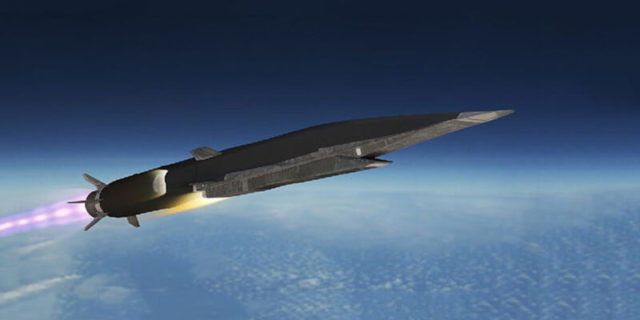
Russia’s Northern Fleet Test-Fires Tsirkon Cruise Missile
Publication: Eurasia Daily Monitor Volume: 18 Issue: 120
By:

On July 19, Russia’s Northern Fleet conducted another successful test of the 3M22 Tsirkon hypersonic anti-ship cruise missile. The test launch occurred in the White Sea, striking a stationary ground target at a range of 350 kilometers. Its success marks an additional step toward the missile’s procurement, which will markedly boost the precision-strike capabilities of the Military-Maritime Fleet (Voyenno-Morskoy Flot—VMF). Moscow plans to introduce the Tsirkon onboard surface ships and submarines, with a ground-based version currently also under development. The principal beneficiary is, therefore, the VMF. Following the test launch in the White Sea, the defense ministry released further details concerning its procurement plans as well as the schedule for the Tsirkon’s introduction into service (Interfax, July 19).
While the United States is also developing hypersonic systems, the difference in the drive to design and procure such cruise missiles in Russia’s Armed Forces is that they will be dual capable. During a US Department of Defense briefing on July 19, Pentagon spokesperson John Kirby explained, “It is important to note that the new Russian hypersonic missiles can have a destabilizing effect and pose serious risks. The contrast is that the United States, for its part, is developing hypersonic systems that are not designed to deliver nuclear warheads at all” (Interfax, July 19).
In recent years, Moscow has stepped up and prioritized the development of such systems, with the political-military leadership openly boasting that these will be able to easily overcome any foreign air-defense system. It also forms part of a wider drive to enhance the military’s precision-strike capabilities while adding another conventional layer to its overall strategic deterrence (see EDM, December 11, 2019). The testing of the Tsirkon has similarly intensified as part of the effort to ensure its successful adoption into service (see EDM, June 10, 2020). Judging from the reporting on the recent test by the Northern Fleet, it appears that the tests have entered their final phase, with the likely introduction of the Tsirkon for surface ships in the navy earmarked for next year (Ruinformer.com, July 19).
The Tsirkon reportedly has a maximum range of 1,000 km and can reach speeds of up to Mach 9. It is a maneuvering, winged, hypersonic cruise missile. In its booster phase, solid-fuel engines accelerate it to hypersonic speeds; and in the second stage, a scramjet motor with liquid fuel (Decilin) enables it to reach maximum speed. Most of its tests to date have involved launches against stationary ground targets. The Tsirkon was first tested at sea in early January 2020. The ranges involved in these tests have varied at 350–450 km; only one test launch struck a target at sea, on October 6, 2020 (Nezavisimoye Voyennoye Obozreniye, October 15, 2020).
During the latest test, on July 19, 2021, the project 22350 frigate Admiral Gorshkov launched the Tsirkon from the White Sea, striking a ground target at a distance of 350 km, on the coast of the Barents Sea (Ruinformer.com, July 19). “According to objective control data, the Tsirkon missile successfully hit the target with a direct hit at a distance of over 350 km. During the tests, the tactical and technical characteristics of the Tsirkon rocket were confirmed. The flight speed was about Mach 7,” according to the defense ministry. President Vladimir Putin earlier said that the work on the Tsirkon system and the successful tests represent “a great event not only in the life of the Armed Forces but in the whole of Russia.” The political-military leadership sees such weapons as a potential game changer in Russia’s military modernization (Kommersant, July 19).
Indeed, the main tests of the Tsirkon have been against stationary ground targets, despite its official designation as an anti-ship missile, with only one test-launch so far against a maritime target. The defense ministry has set next year to commence the procurement of the Tsirkon for the VMF. No further tests are reportedly planned involving sea targets; however, the next may focus on verifying the missile’s maximum range (Riafan.ru, July 23).
Moreover, though Admiral Gorshkov has been the preferred choice to test the Tsirkon, when it first enters service in the VMF the defense ministry plans to place it onboard the Project 22350 frigate Admiral Golovko, due to begin its sea trials in the spring of 2022 (Regnum, July 10). The Project 22350 frigates are earmarked as the first carriers of the new 3M22 Tsirkon, prior to the submarine versions being procured (Interfax, July 19). In terms of the likely submarine carriers, it seems the first will be the nuclear-powered Project 885M Yasen-Ms. Sources close to the Russian military-industrial complex most frequently refer to this submarine as the first platform, before a version of the Tsirkon enters service with the new Laika (“Husky”)–class submarines (Newizv.ru, July 13).
Judging by the successes of the Tsirkon testing over the past 18 months, with only one of these involving a sea-based target, it seems that the defense ministry is already confident in its anti-ship capabilities. The testing is drawing to a close, with its maximum range on the agenda for the next test (Interfax, July 19, 2021; Nezavisimoye Voyennoye Obozreniye, October 15, 2020). Upon entering service, the 3M22 Tsirkon will considerably boost the precision-strike capabilities of the VMF, with the emphasis on hypersonic as a means to overcome foreign air and naval defenses.



